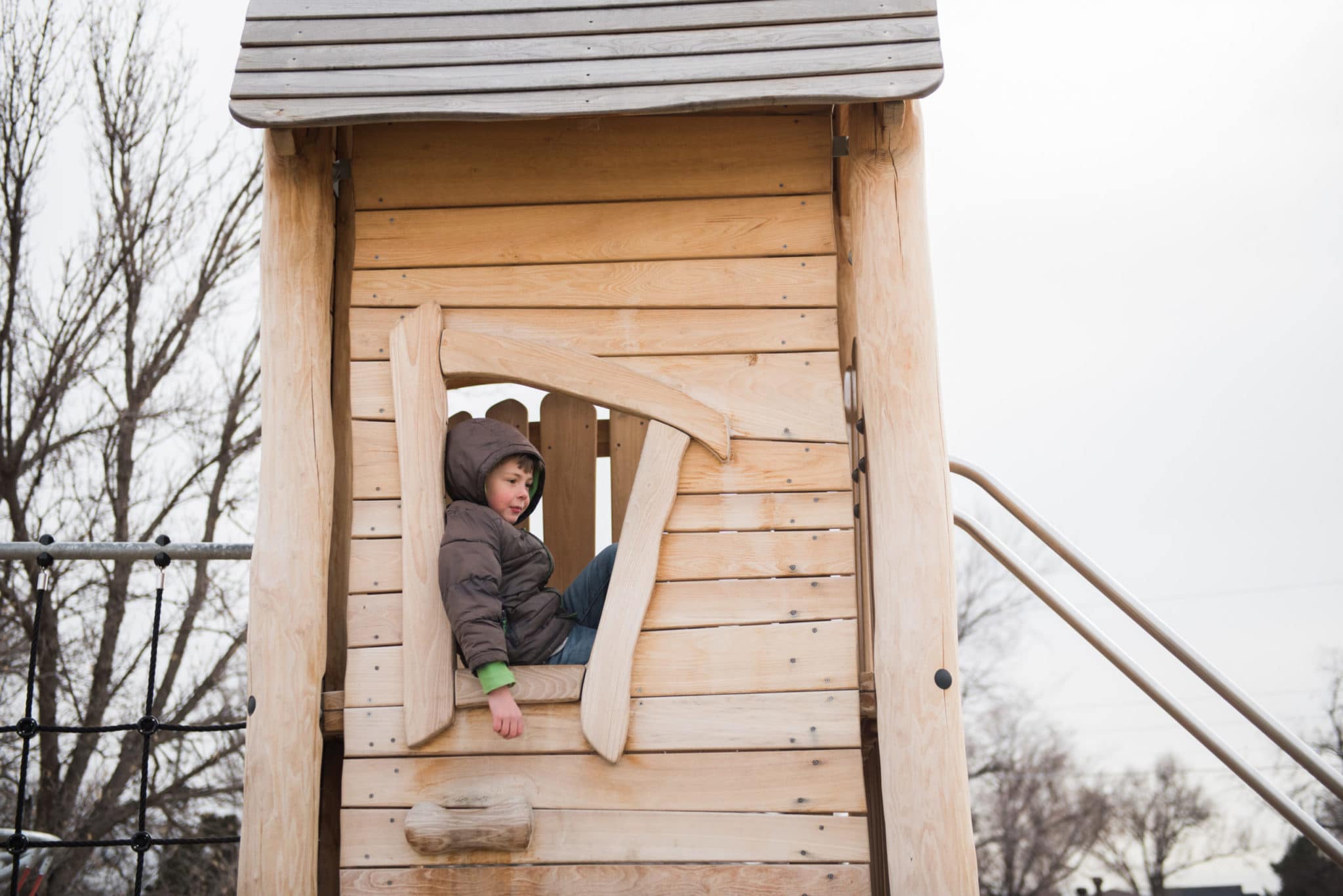
A recent visit to the Waldorf forest kindergarten in Saratoga Springs, NY resonates in memory in a special way. The children whose parents have chosen this program have a consciously simplified environment freed of the temptations and distractions of the busier city life not far down the road. The group spends nearly the whole morning out in nature—no matter the weather–except perhaps for the first hour of morning in deepest winter when the air needs an hour to warm above super-frigid temperatures. Children are called upon to develop heartiness and resiliency in meeting the weather, terrain, practical tasks, and social experiences from which our society too often excessively shelters children. These are all important things for us to appreciate in how these experiences benefit the children’s development physically, emotionally, and socially. But we can take these points up at another time because it is something else that stands out so prominently in memory from this visit.
A young three-year old little girl new to the program latched on to my hand as the group of children began the walk along a trail into the woods. The pathway was made of rounded stepping stones; narrow, slightly-elevated boards to give us walking space above the soggy ground below; similar little “bridges” of two parallel boards that would bounce and spring slightly as we walked their length, challenging our balance; uneven ground that could not be avoided; and puddles that just had to be stepped in. We walked along slowly, three-year old legs having a short stride and some insecurity on the tippy rocks. She held my hand for balance until the path became too narrow and we had to walk single-file. Then she went on independently. We set no speed records. And no one minded. The thirty-two children and five adults walked along in little clusters, some faster, some slower. No one hurried the children along. Getting to our destination took as long as it needed. The littlest children were in no way made to feel inadequate or deficient because they could not walk fast or if a foot slipped on a wet rock and muddy, water-proof overalls resulted. Each child was respected for the capacities she had developed so far, knowing that new skills, competence, and confidence grow upon consolidation of what comes before.
But this still is not really the point. What speaks so strongly in memory is that the teachers allowed the children as much time as was needed to walk our little journey. Each child was allowed to do as much independently as she could, no matter how long it took. Expectations were released of how much or how fast things should happen. The day expected less accomplishment because it was so satisfying to complete a few things well.
The little girl moved on to join other children and did not seek my companionship again. She did not need it. She had literally found her feet and her standing with the other children. She had been granted the time to experience what she could accomplish on her own.
We want our children to become confident, independent doers and directors of their own lives. They can, but we adults have to give them the time to find their own strength. We do not need to speed them up but to slow ourselves down and let the children lead us. We will all benefit.
By Nancy Blanning (our learning specialist) as originally published in Lilipoh Magazine
